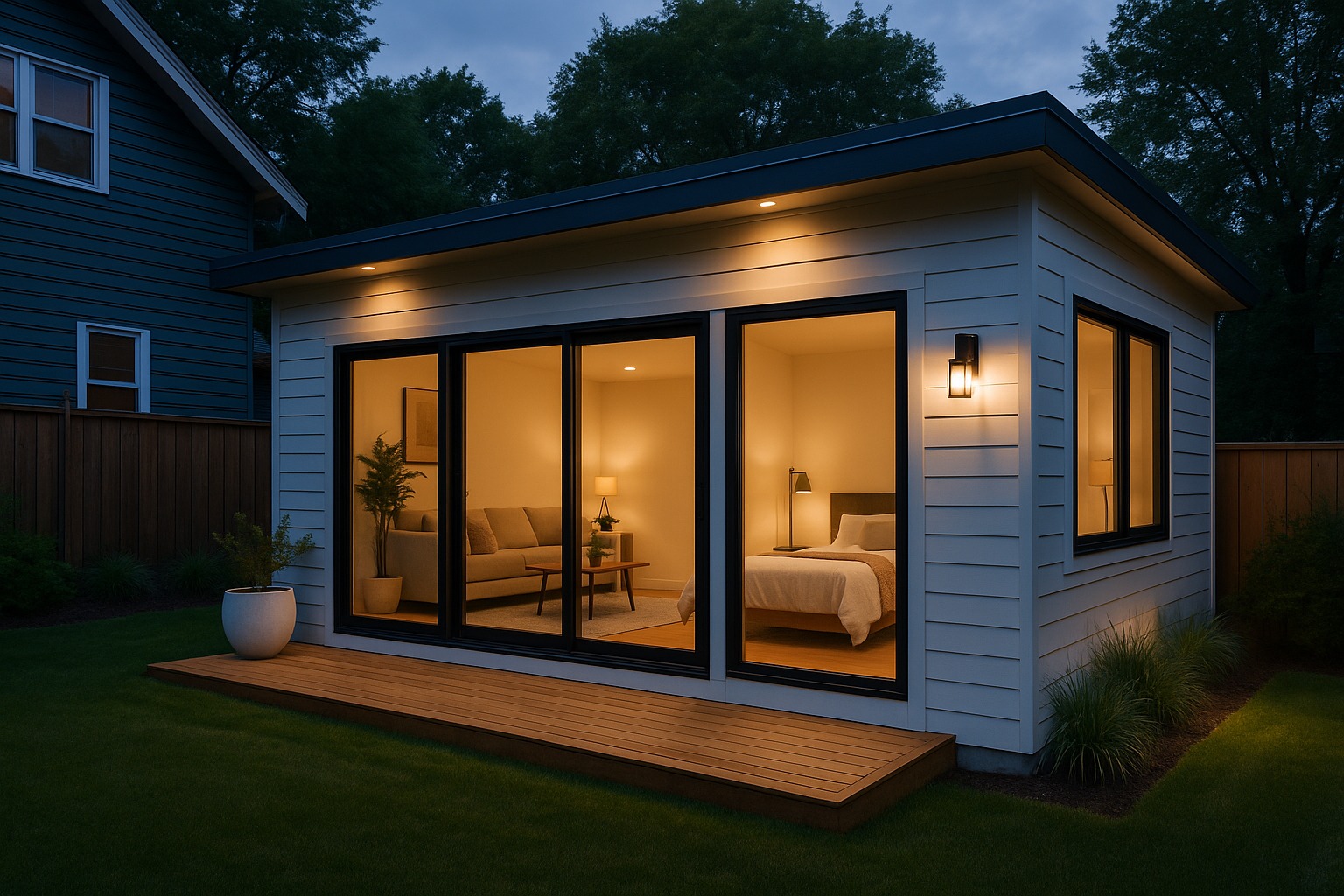ADU financing options at a glance
| Product | Typical use | Disbursement | Rate type | Notes |
|---|---|---|---|---|
| HELOC | Flexible draw for construction payments | Line of credit | Usually variable | Interest-only during draw; quick to set up |
| Cash-out refinance | Large lump sum | At closing | Fixed | Replaces existing mortgage; watch overall rate |
| Construction loan | Ground-up with inspections | Draw schedule | Variable → fixed (rolls to mortgage) | Bank oversight can reduce risk; more paperwork |
| FHA 203k | Purchase + rehab or major renovation | Escrowed draws | Fixed | Lower down, requires FHA consultant and limits |
Monthly payment calculator
This calculator is informational only and not a credit offer. Actual payments depend on lender terms and your profile.
Pros & cons by product
HELOC
- Pros: fast setup, draw as needed, pay interest on what you use.
- Cons: variable rates can rise; some have draw fees.
Cash-out refinance
- Pros: fixed rate, one payment; large lump sum.
- Cons: replaces your current mortgage; closing costs; less flexible.
Construction loan
- Pros: staged draws align with build; inspections reduce risk.
- Cons: more documentation; often interest-only during build; may reset at conversion.
FHA 203k
- Pros: lower down; can bundle purchase + rehab.
- Cons: FHA limits, mortgage insurance, consultant oversight.
Financing FAQ
Can I use a HELOC to pay contractors directly?
Yes—most HELOCs allow direct draws to your checking account so you can pay deposits and progress invoices.
Will a construction loan cover permits and design?
Often yes, if included in the budget; lenders may require invoices and proof of payment at each draw.
What credit score do I need?
Varies by lender and product; higher scores usually qualify for better rates and LTVs.
Can rental income from the ADU count toward qualification?
Some lenders will consider projected rent with restrictions; ask about ADU rental add-backs or DSCR options.
Last updated:
